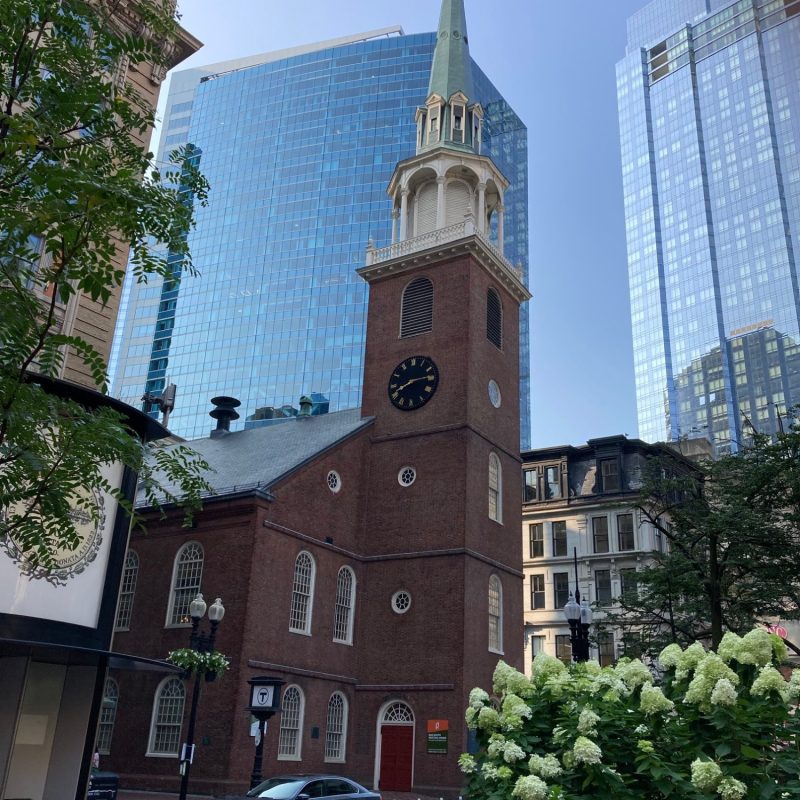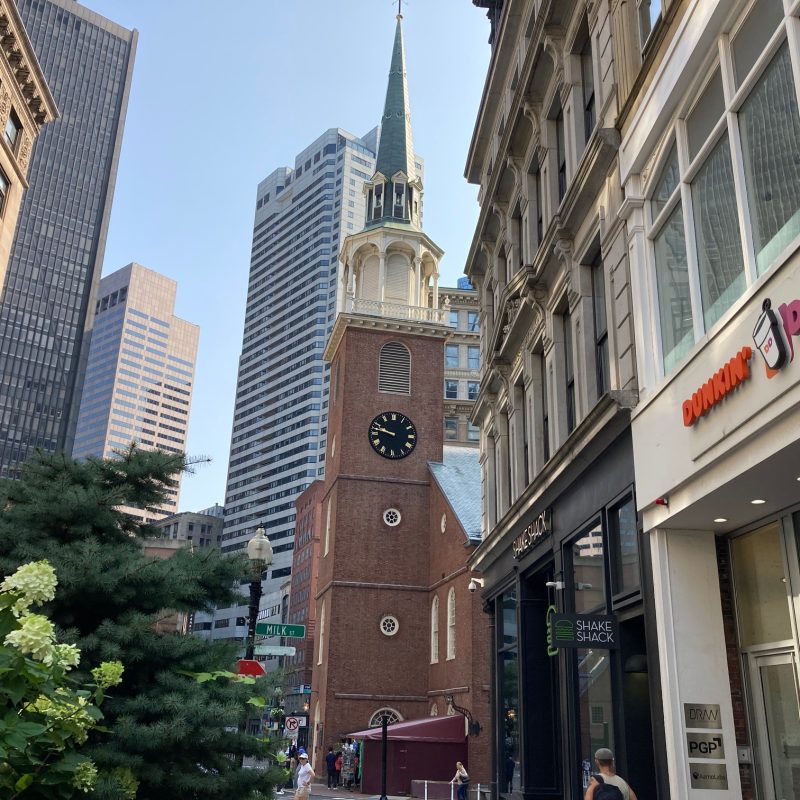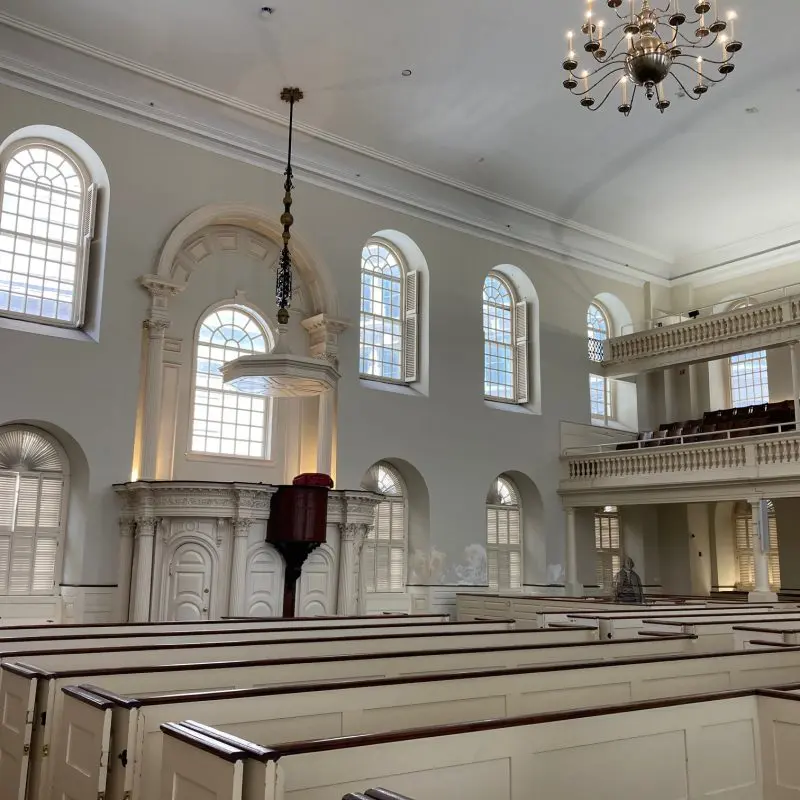The Third Church, also know as the South Church, was founded in 1669 on the site where the Old South Meeting House stands today.
More About Third Church aka South Church, Old South Meeting House
The Old South Meeting House on Washington Street, a National Historic Landmark, has a long and storied history. On this site, a congregation that broke away from the First Puritan Church in 1669 gathered to worship with Rev. Thomas Thacher as its minister. There was already a Second Church – led by the Mathers in the North End – so this one was known as the Third Church, or the South Church. Among the congregants here were judges Samuel Sewall and Peter Sergeant, and the accused Capt. John Alden Jr., son of the Mayflower’s John and Priscilla Alden.
Years after Rev. Thacher’s death in 1678, his widow Margaret Thacher hired the orphaned Mercy Short as her servant in 1690 after she was redeemed from Canada by a William Phips-led expedition. Mercy had an altercation with the imprisoned Sarah Good in Boston’s jail and became intermittently afflicted in 1692-3. Her case was documented by Rev. Cotton Mather in “A Brand Pluck’d Out of the Burning.”
Another connection to the Salem witch trials is Rev. Samuel Willard, who came to the Third Church in 1676 to assist the ailing Rev. Thacher. After Thacher’s death, Willard became the full-time minister, and remained until his own death in 1707. During the trials, Willard was one of the few moderate voices, advising against using spectral evidence to convict. He even helped a few people escape prison, among them Philip and Mary English.
The Third Church was also connected, if briefly, to the Church of England’s efforts to establish a foothold in Puritan Massachusetts. When Royal Governor Edmund Andros arrived in 1686, he asked each of the Puritan churches for a space to hold Anglican services. When none agreed, he seized the keys to the Third Church in 1687 and services were held there, under the leadership of Rev. Robert Ratcliff, until King’s Chapel was built in 1688. Later, this was held against Rev. Willard, with some Puritans claiming he was part of a “popish plot.”
In 1697, Judge Samuel Sewall stood before the congregation at South Church while his minister, Rev. Willard, read Sewall’s apology for his part in the witch trials. Sewall is the only judge known to have apologized publicly. A mural depicting this event is displayed in the House Chamber of the Boston State House today. It was painted by Albert Herter in 1942.
The brick building that stands on the site today was built in 1729. It is most famous for being the meeting place of more than 5,000 colonists in 1773, where they planned the Boston Tea Party. Because of this important connection to the revolution, the British occupied the building two years later, filling the gutted interior with dirt and riding horses inside. It was Massachusetts militia colonel and master builder/architect Thomas Dawes who drew the plan to rebuild the interior once the British left. The Old South Meeting House is a fascinating museum to visit, one of the most popular sites on the Boston Freedom Trail. For more information, visit: Old South Meeting House
In 1873, the South Church congregation built a new church on Boylston Street in Copley Square, where the congregation remains today. Sometimes called the “New” Old South Church, the building is a National Historic Landmark and is considered one of the finest examples of High Victorian Gothic churches in New England. The South Church annually worships at their original home, the Old South Meeting House, on the Sunday before Thanksgiving.
Old South Meeting House is at 310 Washington Street, at the corner of Milk and Washington








